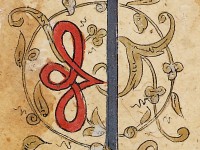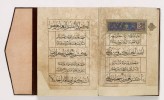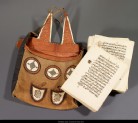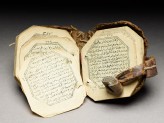Al-Qur’an al-Karim: Sacred Verses, Beautiful Pages
(from 8th Mar until 1st Jul 2012)Discover the Qur’an as a source of artistic inspiration and expression in this selection of works on paper.

- This is a visual browsing tool that maps objects in this publication, gallery or collection trail by date of creation onto a timeline.
- The circular markers indicate where objects are on the timeline.
- The size of the markers indicates the relative number of objects at that point on the timeline.
- Hover over a marker to find out which objects are represented at that point in time.
- To expand, collapse or hide the timeline, click these symbols
 found at the top right of the timeline.
found at the top right of the timeline.
- 800
- 900
- 1000
- 1100
- 1200
- 1300
- 1400
- 1500
- 1600
- 1700
- 1800
- 1900
- 2000
Throughout its history, the Qur’an has been copied in different book formats, some of which are presented in this section. The codex – a text made of pages stitched together and held by two covers – is the most common form, attested from the early centuries of Islam, from Spain to India. This book format is often accompanied by a binding which has an envelope flap at one end. This flap is tucked under the front cover in order to protect the text block and better preserve it. A widespread practice in sub-Saharan Africa – where Islam established a substantial presence much later than in North Africa – has instead been to copy the Qur’an on loose folios and carry them in wallet-like bindings, or leather bags.
Although less common, Qur’ans in the form of scrolls have also been produced. The text is copied over long strips of paper that are glued together and that are either attached to and rolled around a rigid core, or simply rolled up and conveniently stored in small leather cylindrical cases. Finally, miniature Qur’ans or select chapters written in ghubar (literally ‘dust-like’) script or printed are also documented, although they have traditionally been used as amulets. Set in small cases, they could hang from chains or belts, or be worn folded in one’s garments.
Notice
Objects from past exhibitions may have now returned to our stores or a lender. Click into an individual object record to confirm whether or not an object is currently on display. Our object location data is usually updated on a monthly basis, so please contact the Jameel Study Centre if you are planning to visit the museum to see a particular Eastern Art object.
© 2013 University of Oxford - Ashmolean Museum








